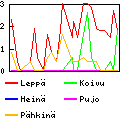The economic value of a Youtube video
The Youtube platform has been designed for the purpose of making all of its
videos are available to anyone at anytime. Given its large amount of content,
its suggestion algorithm and the ability to automatically play the next
suggested video, a user of Youtube can consider that the stream of videos he
wants to watch is limitless. This makes the stream a nonscarce resource i.e.,
a free good which, from an economics point of view has no value.
Asking users to pay for watching videos would indeed be a bad business move
for Youtube, as many user would refuse to pay for watching content they
currently get at no cost. Even the Youtube Red subscription, according to an
Ars Technica article and related user comments, seems to be valuable not for
it exclusive content, but for the extra features provided by the mobile player
(download for offline viewing and background playing). Interestingly, these
features are already provided by non-standard software, which is freely
available. The exclusive content being apparently of little interest according
to the article, the subscription seems to rather be “tax” on people who
don't know they could legitimately get the same service for free.
Youtube being a business, it needs to get revenue, at least to support the
cost of its large IT infrastructure. Since users are not charged any money,
Youtube's revenue comes (exclusively?) from advertising (I guess that the
collection of user behavioural data and their profiling is also sold to
advertisers). Youtube's content therefore has value only insofar as it
attracts potential consumers and exposes them to advertisement. The content
itself does not matter to the platform, as long as users are drawn to it.
This is thus the foundation of the Web platforms and the Attention Economy,
where the users' attention is the actual product being sold by the platforms.
User profiling and Big Data is only a tool used for maximising the amount of
attention being captured.
Advertisers are gamblers, you don't need to let them win
In 2004, Patrick Le Lay, then CEO of the French TV channel TF1 said “what we
sell to Coca-Cola is available human brain-time.” One aspect of this
is that TV channels sell advertisers the opportunity to reach the channel's
viewers and attempt to influence them into buying the advertised products.
From the point of view of the advertisers, it is a gamble: they bet money (the
cost of producing the TV commercial and the price paid to the TV channel to show
the commercial) and hope to gain from it (when viewers buy their products
because they have seen the commercial and have been influenced by it). This
gamble is two-fold: the viewers may or may not see the commercial, and they may
or may not be receptive to the influence techniques used in the commercial.
In social media, advertisement can be considered from the same angle: the website
sells advertisers display space on its pages, and the advertisers gamble that
users of the website will see the commercial and be influenced by it.
While everybody agrees that you don't have a moral obligation to buy a product
after you have seen a commercial, it seems less obvious that you don't either
have any moral obligation to view the commercial. For example, you could close
your eyes and plug your ears to ignore the commercial; you could even use tools
that automatically hide the commercial from you.
Putting the advertisers' money to uses I approve of
As I want to protect myself from the influence of advertisers, I normally use
automated tools that prevent me from seeing advertisement. I record television
programs and skip the commercials (automatically when the tool works as
intended, otherwise manually), and I use ad blockers in my Web browser to
prevent commercials from being displayed on my screen.
The difference between TV and the Web is that the TV channel gets paid for
broadcasting the commercials and cannot control whether or not I skip them
while advertisers on the Web pay the websites only if the commercial is being
fetched i.e., only if I allow the Web browser under my control to display the
commercial. In that case, my preferred solution would be to fetch the
commercial as if it would be displayed, without actually displaying it. And
since advertisers not only display commercials but also track the users across
websites, it is necessary to isolate each commercial so that the tracking is
not possible.
I would not normally care about websites not being paid by their advertisers,
but in the particular case of Youtube, I use tools that allow me to watch
content without having to view any commercial, meaning that the content's
creators cannot hope to get payment from Youtube. I therefore dream of a tool
that would allow me to channel advertisers' money to the content creators
without having to view any commercial, thus letting the advertisers gamble,
but strongly shifting the odds of this gamble in my favor. I consider this to
be retribution for the advertisers' attempt at influencing me for their
profit.








